Hydrangea oakleaf: varieties, planting, care and reproduction
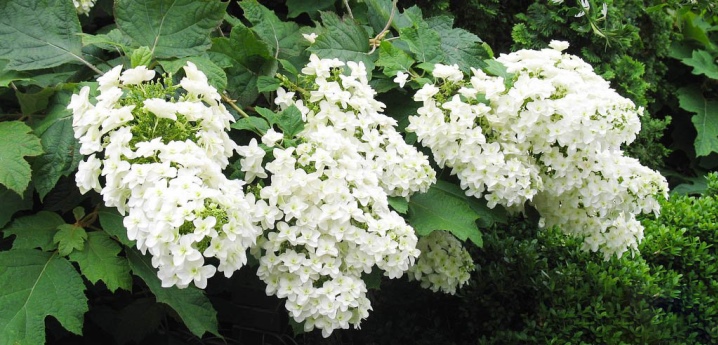
One of the finest garden decorations is the oakleaf hydrangea. The plant itself first appeared in North America and has taken root in many parts of the world. In this article we will talk about care, planting opportunities in the Moscow region and the middle lane, winter hardiness of this delicate, beautiful shrub, "Amethyst" and other varieties.
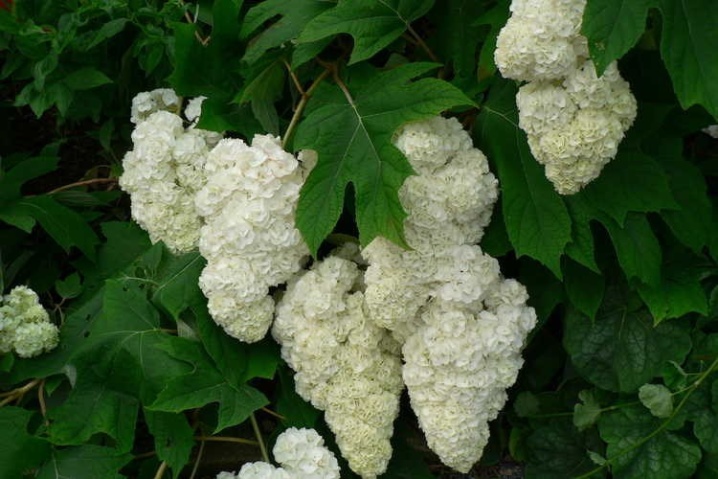
Description
Hydrangea is oak-leaved, unpretentious, resistant to harsh climatic conditions. The shrub looks noble both during the flowering period and afterwards. The branched shrub belongs to large, most varieties reach a height of 2 meters. Hydrangea has oak-leaved textured leaves with a rough surface. Their shape vaguely resembles oak, however, the leaves are pointed at the edges.
The color of the foliage of hydrangea is oak-leaved in summer, like many shrubs, green. But it radically changes to a rich burgundy shade with the arrival of autumn, making culture a wonderful addition to the garden. Its flowering period is quite long and can last all summer long. Small white flowers are collected in cone-shaped inflorescences. In the fall, they may turn a little pink.
The plant has good winter hardiness. It is planted both in central Russia and in the Moscow region.
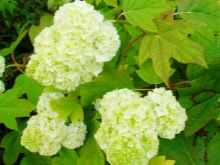
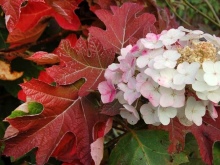
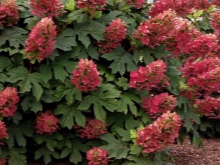
Gardeners note the following advantages of culture:
- resistance to pests;
- disease resistance;
- cold resistance;
- good tolerance to dry weather;
- a wide range of varieties;
- abundant and long flowering.

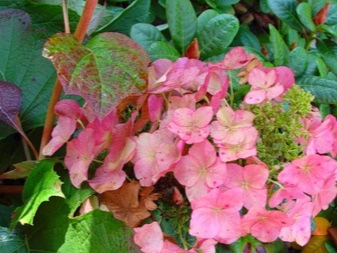
There are also some disadvantages:
- exactingness to the correct execution of planting work;
- exactingness to the presence of light in the designated area;
- poor tolerance of nitrogen-containing fertilizers.

Varieties
Hydrangea oakleaf has many varieties and varieties, each of which has its own characteristic features.
The following varieties are most popular: Amethyst, Harmony, Burgundy, Snowflake, Snow Queen, Ruby Slippers, Ice Crystal, Pee Wee, Little Honey, Snow White Domes. Let's talk about them in more detail.
- "Amethyst". Like the usual oak-leaved hydrangea, "Amethyst" grows under 2 meters, with foliage that changes color to crimson in autumn. However, this variety has coral-colored inflorescences.
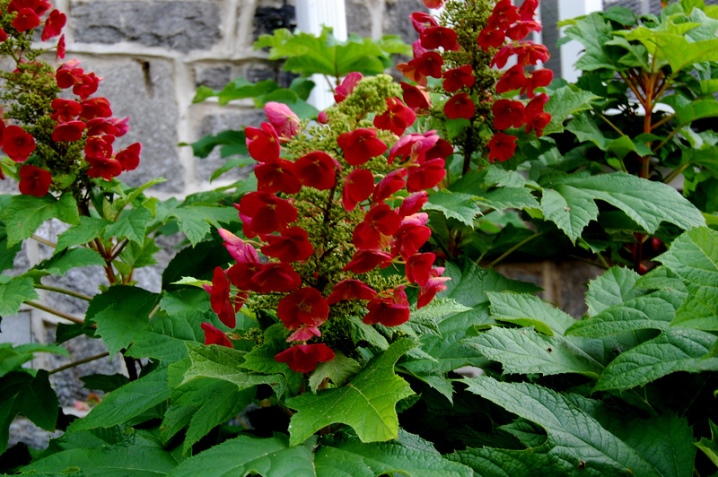
- "Harmony". With proper care, this variety grows no lower than "Amethyst" and has the same beautiful scarlet leaves in the fall.
A unique feature of the variety is its large snow-white or pale cream inflorescences.
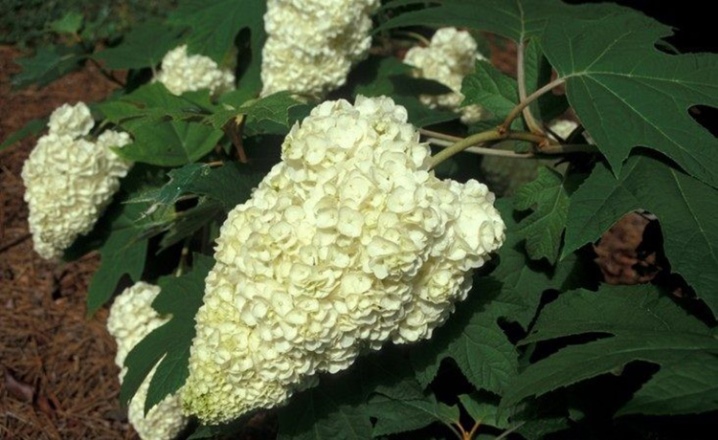
- Burgundy. It grows slightly lower, up to 1.5 meters. It has bright purple-purple inflorescences and more rounded leaves. Burgundy is classified as a slow-growing type of hydrangea. The frost resistance of the plant is up to -27 degrees.
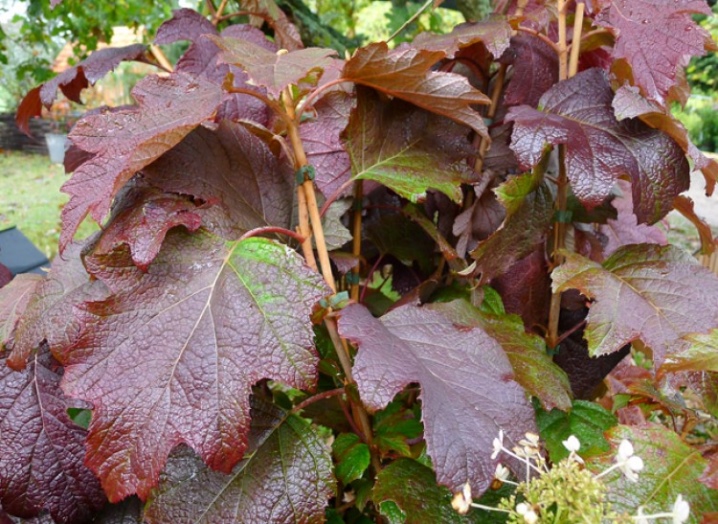
- Snowflake. A shrub with white semi-double, slightly pointed flowers, which turn partially or completely pink in autumn.
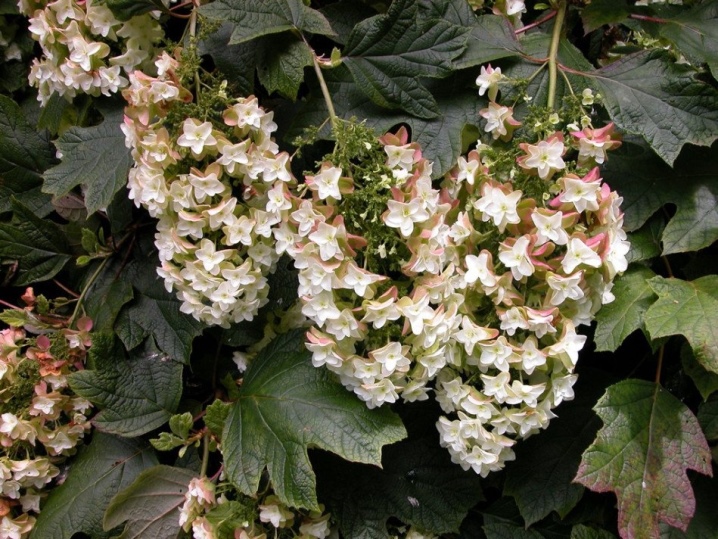
- Snow Queen. Its main difference is rich, abundant flowering. The flowers are large in size, have a delicate white tint. Snow Queen grows up to 2.5 meters.
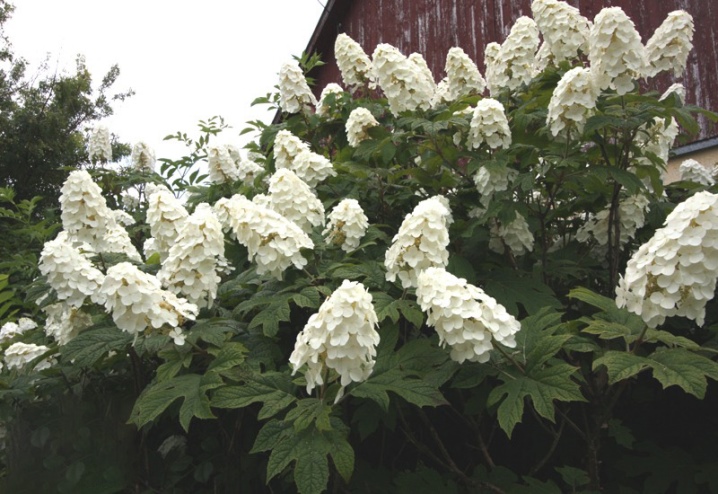
- Ruby Slippers. At first, the variety is no different from the ordinary oak-leaved hydrangea. However, at the beginning of autumn, the entire bush acquires a deep scarlet color, even the inflorescences.

- "Ice crystal". Has silvery-green, practically unchanging foliage.From white flowers, collected in beautiful large inflorescences, fruits are formed in autumn. "Ice crystal" grows up to 1.8 meters.
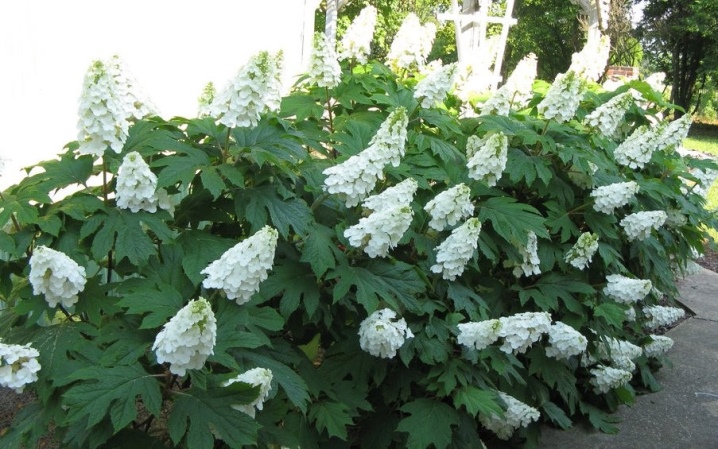
- "Pee wee". It has dark green foliage, cone-shaped, paniculate inflorescences, first pure white, then pale pink. The variety does not exceed 1.5 meters.
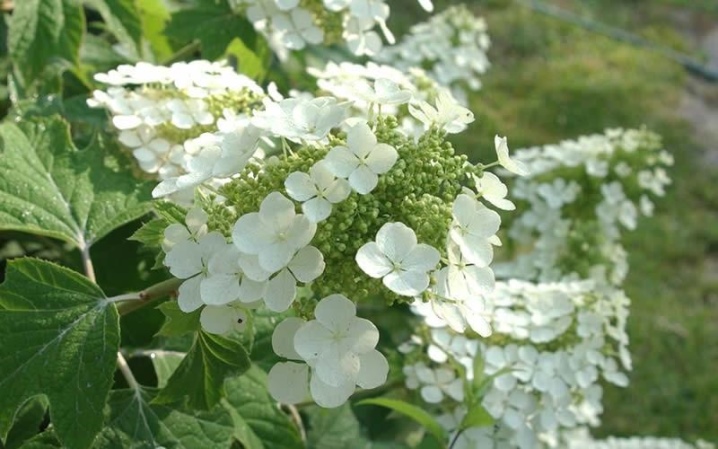
- Little Honey. He is very popular for its excellent decorative properties. Initially, the culture has yellow leaves, which acquire a burgundy hue in the fall.
Little Honey is a very small culture, no more than 0.5 meters. Therefore, this variety is considered dwarf.
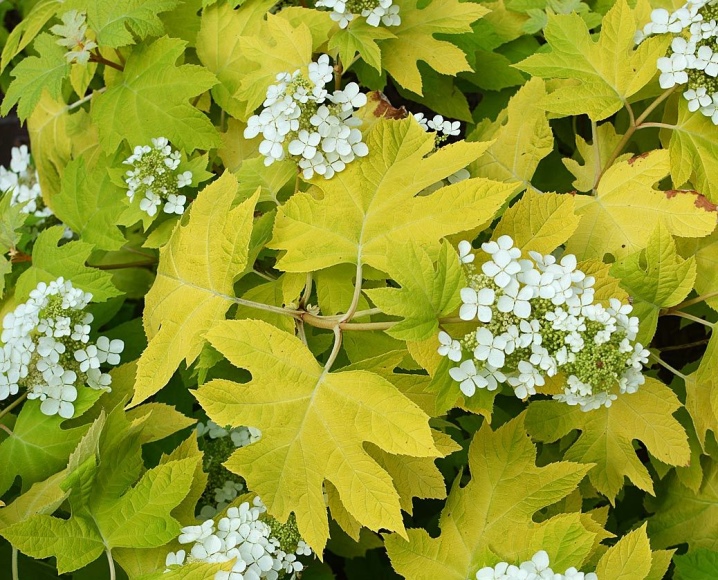
- "Snow-white domes". A shrub with noble dark green leaves and paniculate white inflorescences grows up to 2 meters.
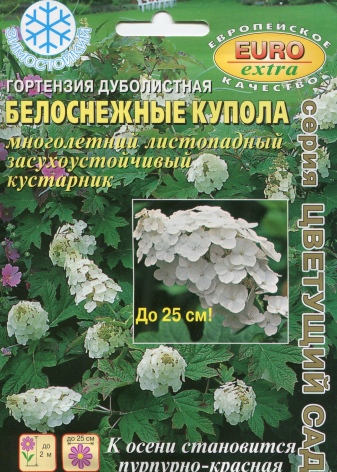
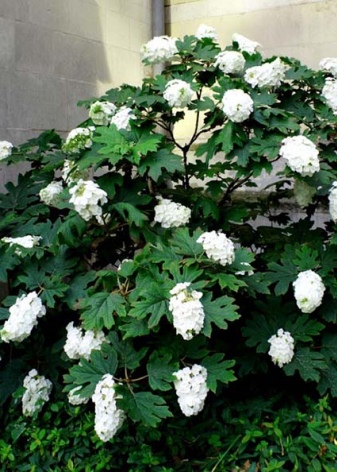
All of the above varieties have good winter hardiness.
Landing
Any variety of oakleaf hydrangea needs proper planting. Let's consider the basic principles. The best option for landing (in terms of illumination) is partial shade. It is even better to plant a shrub on the sunny side than in a completely shaded area. The culture grows well in acidic or slightly acidic soils. Peat is added to neutral soil. The plant does not tolerate alkaline soil.
Hydrangea is planted in the spring, somewhere in the interval from the beginning to the middle of the last month of spring, in open ground. Although in the areas located in the south, planting work can be carried out in September. When planting oakleaf hydrangea seeds, make sure they are fresh. Masters recommend purchasing seed in nurseries. Seeds are planted in containers with a nutrient substrate, consisting of leafy soil, peat and sand in a ratio of 4: 2: 1.
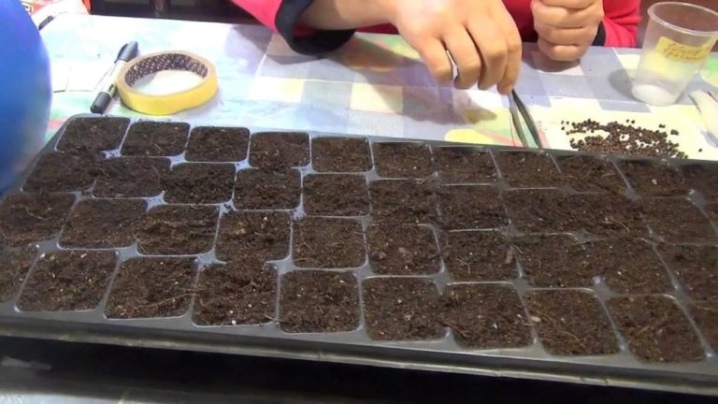
The first shoots, provided that the temperature is not lower than +20 degrees, appear in about a month. During the development of sprouts, it is recommended to dive them 2 times. Before transferring the plant to open soil, the culture is cultivated for 2 years. By this time, the hydrangea will have good frost resistance, it can be planted even in the Moscow region, at least in any other point in central Russia.
The culture can withstand temperatures down to -29 C. In Siberia, oakleaf hydrangea needs more careful care, in winter it must be covered or transplanted into a pot.
Although the plant develops best, of course, in the regions located in the south of our country.

Care
Oaky hydrangea, as a rule, is not picky in terms of care. Anyone can grow this shrub, even a novice gardener. How often you have to water the plant is influenced by:
- season;
- the amount of precipitation.
In the spring and autumn periods, the soil does not need moisture. In hot summer, oakleaf hydrangea is watered 1-2 times. After that, it is recommended to slightly loosen the ground, carry out mulching.
The plant is also partial to fertilizers - they can be used once a season. Thanks to this simple method, you can achieve lush flowering.
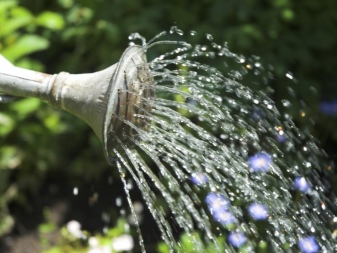
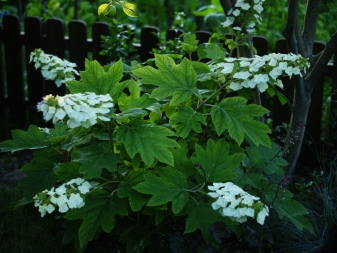
At the initial cultivation, the crop needs feeding about once a month. In the period from the first growing season to the appearance of the buds, an infusion of mullein is used, and during the budding period itself - phosphorus and potassium fertilizers, which additionally contributes to the development of the culture and its rich flowering. The culture must be pruned to get rid of damaged and dry branches, shoots directed to the inside of the crown. During autumn pruning, old inflorescences must be removed.
Before the first frost, small shrubs are moved to pots, placed in warm and dark places. In winter, they fall into a dormant state, so the plants are watered less often. Oak-leaved hydrangea wakes up again in the middle of spring. Therefore, it will be possible to transfer it to the light, start watering it with warm water and apply fertilizers. If the winter is expected to be mild, the young plant can be sprinkled with earth. Fortified shrubs are covered in the interval from mid to late autumn, bending the branches to the ground and covering with spruce branches.

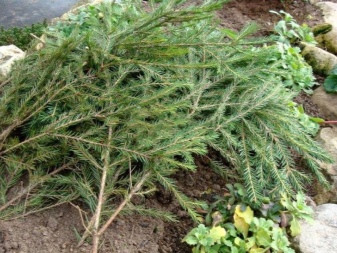
Reproduction
Oaky hydrangea is propagated in many ways. Let's take a look at some of them.
- Growing from seeds. With this method, in the fall, the seeds are first placed in a nutrient substrate, waiting for sprouts to appear in the coming month. A young plant is planted in special containers to expand the area of nutrition and growth by 2 times.
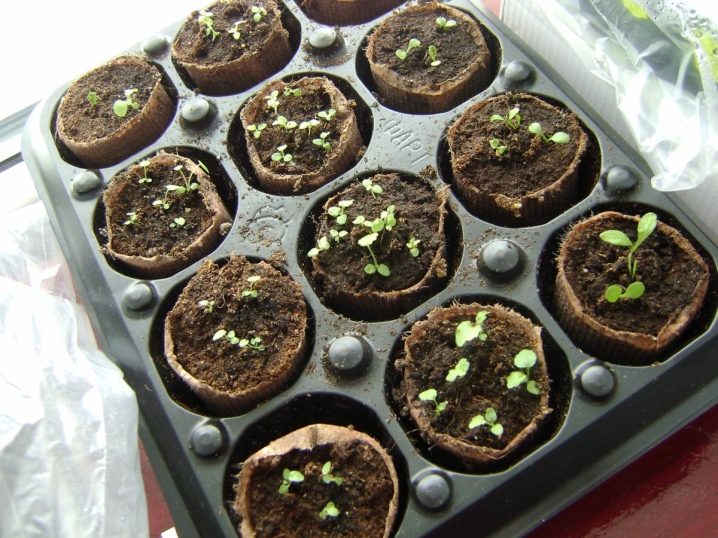
- Using cuttings. The fragments separated from the hydrangea are prepared in the middle of the first summer month. First, they are divided into parts, each having 3 pairs of leaves. The cuttings are soaked in a rooting stimulator, and later transferred to the substrate.
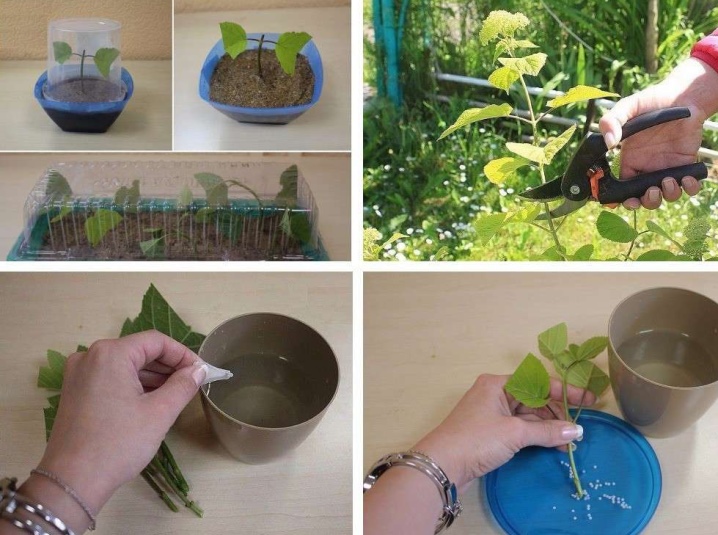
- By dividing the bush. The hydrangea is dug up and divided into parts with three or more growth points each. After the plant is planted in the soil.
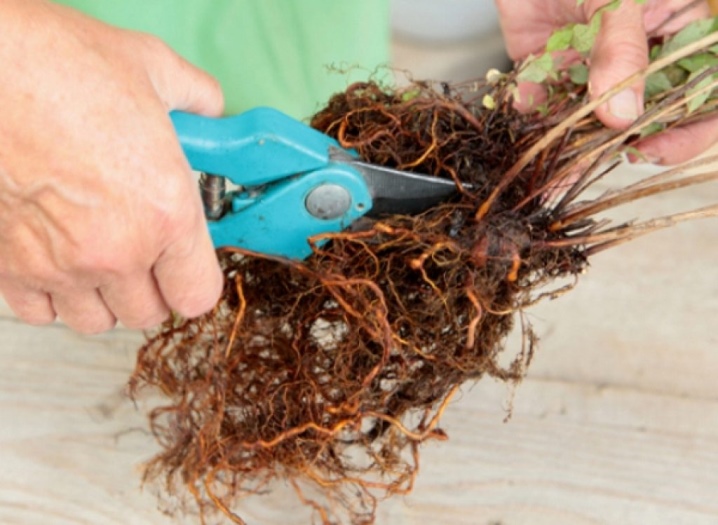
- Layers. At the beginning of the last spring month, cuts are made in the area of the buds (nearby, without affecting them) at the shoots below, placing wooden sticks in the cuts. The bends are tilted and, fixing, sprinkle with soil. New roots appear after a year, and after another layer is dug up and transplanted.
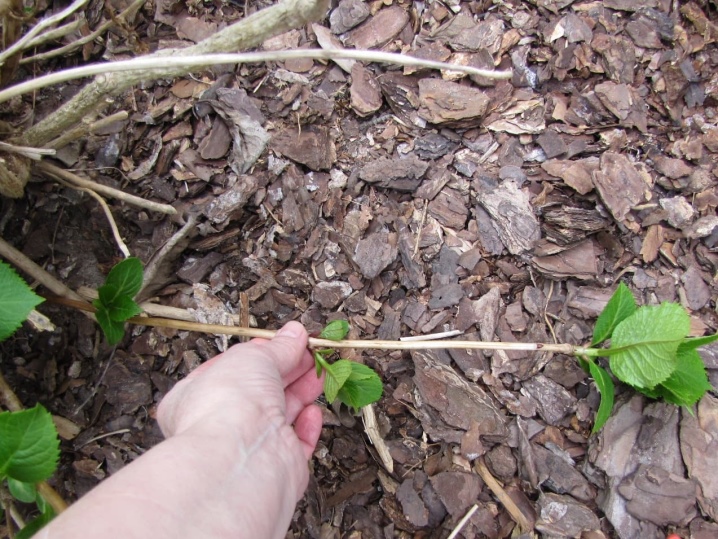
Diseases and pests
Along with all the above-described advantages that a culture has, it also has its own problems regarding care, diseases and pests. The culture is sick and rarely tolerates the influence of pests. Hydrangea oakleaf is not so much sensitive to diseases, the actions of insects, as to the wrong actions during the growing period. The bush can have such difficulties.
- Chlorosis of leaves. An inevitable consequence of planting a plant in alkaline soil, overly generous fertilization. Chlorosis of the leaves is characterized by yellowing and falling foliage. It can also arise from a lack of nitrogen, magnesium and iron. In such cases, organic fertilizers help out, as well as fertilizers containing nutrients necessary for the plant in the form of various mineral salts.
- Sunburn. They can occur when the plant is in a place where there is no shade during the day.
- Freezing of buds. This pathology is observed when the bush is left without shelter in winter. Freezing of buds can be the reason if the shrub does not bloom in summer.
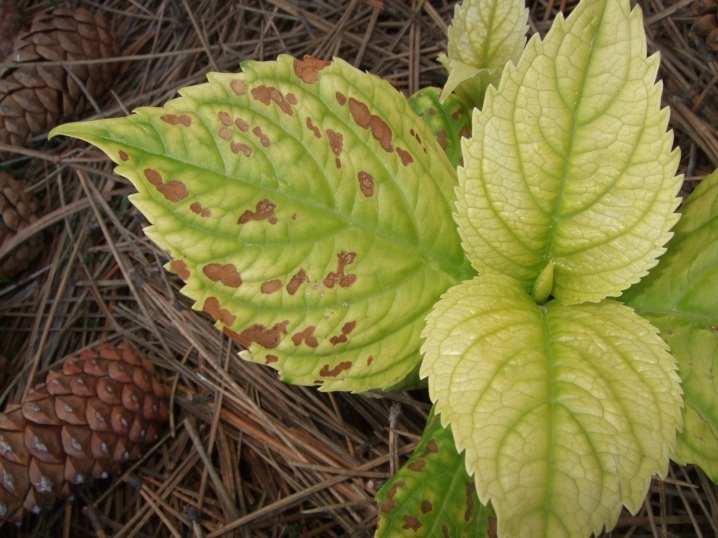
Oak-leaved hydrangea is a culture resistant to many diseases. If she is sick, it is most often from gray rot or fungal infections. They arise, in most cases, due to excessive moisture in the soil. To solve the problem, you need to reduce the frequency of watering. Among the pests of oakleaf hydrangea, it is worth noting:
- aphids;
- weevils;
- spider mite.
They can be neutralized with the help of insecticidal preparations.
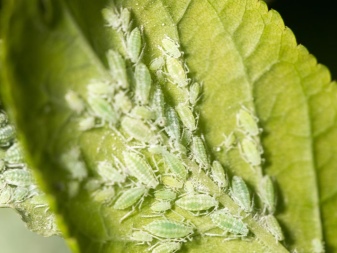

Examples in landscape design
Oaky hydrangea helps many designers to create unique compositions. This culture combines well with other plants, and thanks to its good frost resistance, oak-leaved hydrangea pleases the owners for a long time.
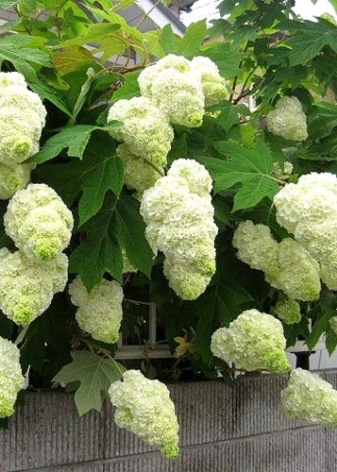
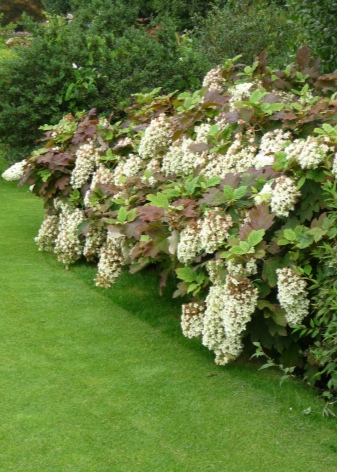
In relation to this plant, other shrubs are planted at a distance of 1.5 meters.

Oak-leaved hydrangea grows well near ponds. It is often planted framing rest areas. The plant looks good in combination with small decorative flowers.
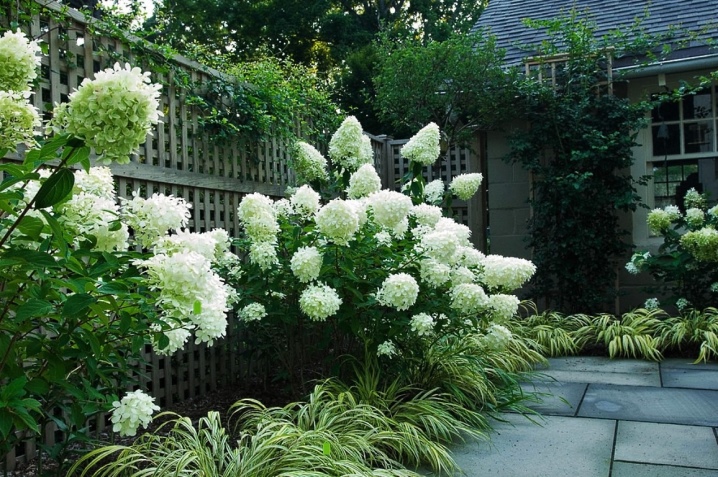
Oak-leaved hydrangea is a wonderful plant that can decorate any garden. The shrub is popular because of not only its external characteristics, but also because of its undemanding care.
For more information on the features of this hydrangea, see the next video.



































































The comment was sent successfully.